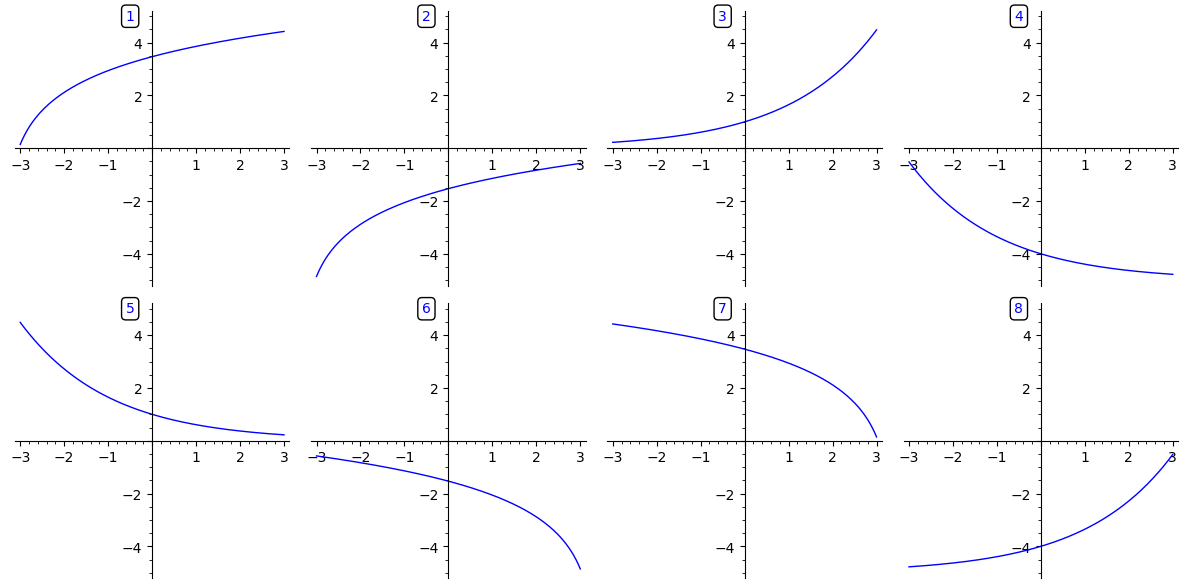3Week 38
3.1 Readings for this week's lectures
Sections 7.3, 7.12 and 14.1 in the textbook.3.2 Readings for this week's exercises
Sections 6.8 – 6.11 and 8.5 in the textbook.3.3 Notes
Leibniz's notation
In Leibniz's notation the derivative of a
function is written in one of the following ways:
Rules for differentiation
In Leibniz's notation the rules for the derivatives of a sum/difference, a product and
a quotient of two functions are expressed like this:
In the prime notation the rules look as follows
Chain rule
For a composite function , and with and the chain rule
can be written as:
Higher order derivatives
3.4 Exercises
In this exercise we consider how capital grows after investing an amount that yields continuous interest.Let denote the total capital as a function of time measured in years since the initial investment.
is the amount initially invested in million EUR and is the interest rate.
If the interest is 15%, then .
It is fine to give your answer in terms of , so hypothetical answers could be, e.g., or
- If the initial capital invested is 2 million EUR and the interest rate is 10%, what is the total capital after 10 years?
- What is the rate of increase of capital after 10 years?
Calculate the derivatives below:
Find the derivative of the functions below, both with and without using the chain rule.
Calculate where and .
Use the chain rule to calculate the derivatives below.
- .
- .
- .
A variable is a function of another variable , that, furthermore, is a function of the variable .
The relations between the variables are given by the following expressions:
Construct the correct expressions for the chain rule using both Leibniz's notation and the prime notation, by
dragging the correct items onto the empty boxes below.
Find , and for the function
Calculate the following derivatives.
- , where
- , where
- , where
Let denote the turnover of Maersk Line in the year .Connect the statements below with the correct mathematical expressions by dragging the
expressions onto the right boxes.
a) The turnover is falling, but the rate of the fall is decreasing b) The turnover is growing, and it grows more and more with time c) The turnover is growing, but it grows less and less with time d) The turnover is falling, and the rate of the fall increases
and
and
and
and
and
A function is given by: .
Below are shown graphs of functions with different combinations of signs of , and .

Drag the numbers corresponding to the graphs onto the empty boxes, so that they match the signs of , and ., , , , , , , , , , , , , , , ,
1
2
3
4
5
6
7
8